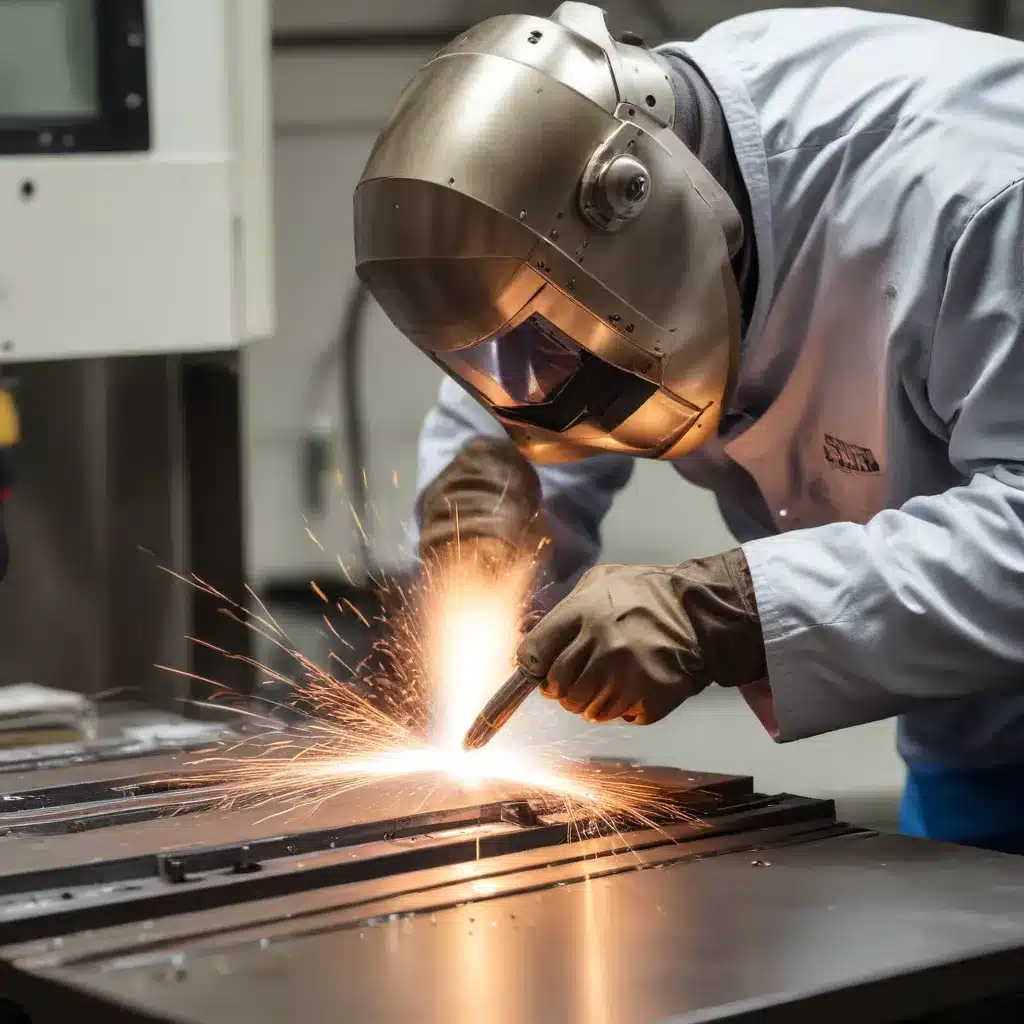
As an experienced welder and metal fabricator, I’ve had the privilege of working with a wide range of welding techniques, each with its unique strengths and applications. But among the various methods I’ve encountered, electron beam welding stands out as a true marvel of precision and versatility. In this article, I’ll share my insights and personal experiences with this cutting-edge technology, and explore how it can elevate your fabrication processes to new heights.
Unlocking the Potential of Electron Beam Welding
When it comes to advanced manufacturing, the choice of welding technique can often make or break a project’s success. In my years of working in the industry, I’ve seen firsthand the transformative power of electron beam welding. This precision welding method harnesses the power of accelerated electrons to create welds of unparalleled quality.
By directing a focused beam of high-energy electrons onto the materials in a vacuum environment, electron beam welding achieves deep penetration and minimal heat-affected zones. The result? Incredibly strong, clean, and distortion-free welds that are simply unmatched by conventional welding techniques.
One of the key advantages that has truly impressed me is the ability of electron beam welding to join a wide range of materials, including dissimilar metals. This versatility makes it an invaluable tool in industries such as aerospace, medical device manufacturing, and semiconductor production, where complex components and exotic alloys are the norm.
Precision, Strength, and Repeatability
When it comes to the fabrication of critical components, precision is paramount. I’ve found that electron beam welding excels in this regard, producing welds characterized by their purity and structural integrity. The process is highly automated and computer-controlled, ensuring consistent results and minimizing the potential for human error.
The depth of penetration and the narrow heat-affected zones achieved through electron beam welding are truly remarkable. I’ve used this technique to fabricate intricate parts with tight tolerances, and the level of precision and repeatability has been simply astounding. Compared to traditional welding methods, the reduced distortion and minimal warpage allow for tighter assemblies and higher-quality end products.
Tackling Complex Challenges
One of the aspects I find most fascinating about electron beam welding is its ability to tackle complex fabrication challenges. In the aerospace industry, for example, I’ve been involved in projects where we needed to join a variety of exotic alloys, from titanium and Inconel to stainless steel, with uncompromising requirements for strength and integrity.
Electron beam welding has proven to be an invaluable tool in these scenarios, allowing us to overcome the limitations of other welding techniques. The deep penetration and narrow heat-affected zones enable us to weld dissimilar metals with precision, ensuring the structural integrity of critical components.
Moreover, the automated nature of the process has enabled us to maintain a high level of consistency and repeatability, even when working with complex geometries or delicate materials. This has been particularly important in industries like medical device manufacturing, where the slightest deviation can have significant consequences.
Mastering the Intricacies of Electron Beam Welding
While the initial investment in electron beam welding equipment can be substantial, the benefits often outweigh the costs, especially for high-precision, high-volume production. The key is to understand the intricacies of this advanced welding technique and leverage its capabilities to the fullest.
One aspect I’ve had to grapple with is the importance of the vacuum environment. Electron beam welding requires a vacuum chamber to prevent the beam from being deflected or scattered by air molecules. This can add complexity to the setup and integration of the equipment, but the payoff is the exceptional quality and purity of the welds.
Another crucial factor is the need for precise control over the beam parameters, such as voltage, current, and focus. These variables can significantly impact the depth of penetration, the width of the weld bead, and the overall quality of the joint. As a seasoned welder, I’ve learned to meticulously monitor and adjust these parameters to ensure consistently outstanding results.
Embracing the Future of Fabrication
As the industry continues to evolve, I believe electron beam welding will play an increasingly pivotal role in shaping the future of advanced fabrication. The ability to produce welds of unparalleled precision, strength, and repeatability makes it an indispensable tool for industries where failure is simply not an option.
In the aerospace sector, for instance, the demand for lighter, stronger, and more efficient components is driving the adoption of electron beam welding. I’ve seen firsthand how this technology has enabled us to fabricate intricate structures with superior structural integrity, pushing the boundaries of what was once thought possible.
But the applications of electron beam welding extend far beyond the aerospace industry. In medical device manufacturing, this technique has been crucial in the creation of complex, high-precision implants and surgical instruments. And in the semiconductor industry, electron beam welding has been instrumental in the fabrication of delicate and intricate electronic components.
Embracing the Future of Fabrication
As I reflect on my experiences with electron beam welding, I can’t help but feel a sense of excitement for the future of fabrication. This advanced technology has truly transformed the way we approach complex manufacturing challenges, and I believe it will continue to push the boundaries of what’s possible.
Whether you’re working in the aerospace, medical, or semiconductor industries, or any other field that demands the highest levels of precision, strength, and repeatability, I encourage you to explore the capabilities of electron beam welding. The investment may be significant, but the rewards in terms of quality, efficiency, and innovation are truly remarkable.
At The Weld Fab, we’ve embraced this cutting-edge technology and have seen firsthand the transformative impact it can have on our fabrication processes. If you’re interested in learning more or exploring how electron beam welding can elevate your manufacturing capabilities, I’d be more than happy to discuss your specific needs and requirements.
Together, let’s harness the power of this advanced welding technique and redefine the boundaries of what’s possible in the world of metal fabrication.


